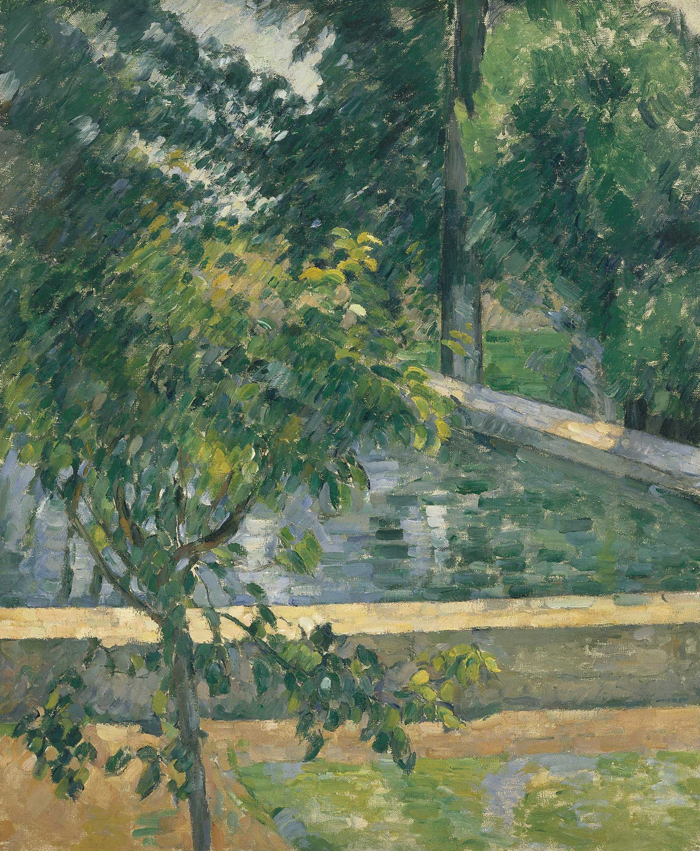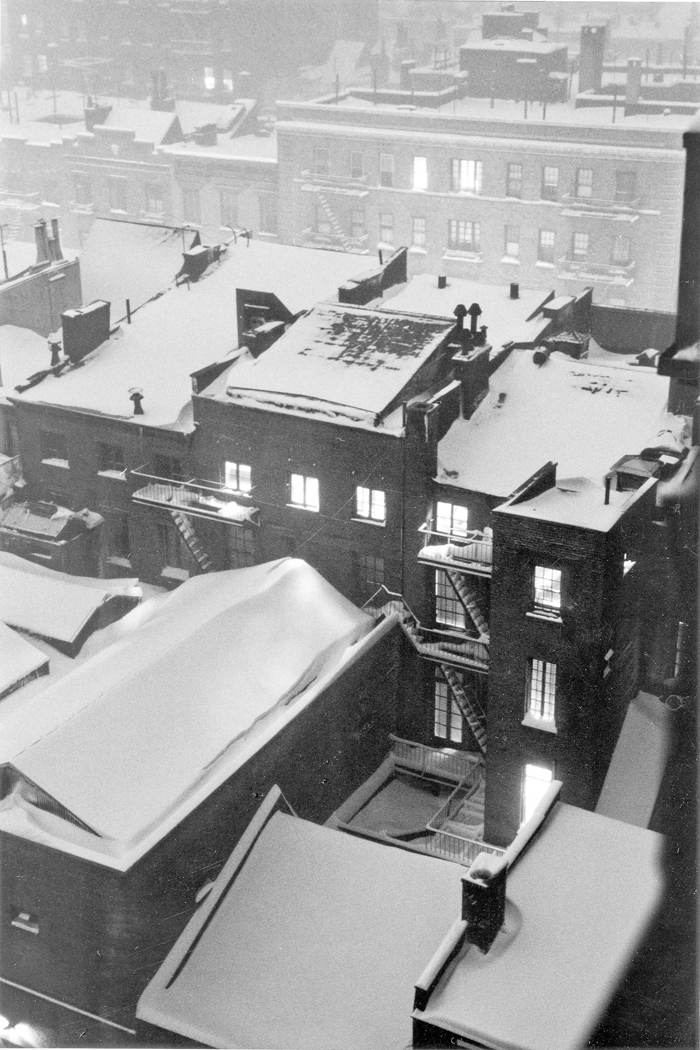I went to see the Pioneering Modern Painting: Cézanne and Pissarro 1865-1885 exhibition at LACMA for several reasons.1 Partly because the show was supposed to demonstrate how “these artists’ political and philosophical views brought them together and ignited a dialogue that lasted for more than two decades”2 and how they “became a kind of two-man collective, exchanging information and rotating roles”3 and partly because there were some paintings in the show that I had never seen before.
Maybe it was just the day I went but the first thing that struck me was that there was hardly anyone at the exhibition younger than I was. That just seemed odd. Where were all of the undergraduate students, had this work really fallen off the radar to the extent that hardly anyone under 50 wanted to see it?
After looking at the paintings for a while the thing that struck me was that what I found most interesting about the show had almost nothing to do with the premise of the show — the artists’ friendship, the fact that they occasionally painted with their easels very near one another, that their use of the palette knife was considered innovative and that they were both considered outsiders. The paintings that I kept going back to were their landscapes and what fascinated me was how totally different Cézanne’s compositions were from Pissarro’s and how seeing this difference allowed me to think about their work in a different way.
When looking at Pissarro’s landscape paintings I was conscious of how he depicted time, or more specifically of how he froze time. His paintings represent specific moments and he made me aware of this with a variety of strategies, the most obvious being his inclusion of people. Not people just posing for their portraits but people doing things. People stopped mid-sentence while having a conversation, a person caught in the act of kneeling down to plant something in a garden or a couple in a carriage having just emerged from a small grove of trees with their horses halted in mid-stride. He painted on sunny days and the resulting shadows often became integral parts of his compositions. And his skies always have clouds. Many of them have very specific, realistic clouds that make you believe that the ones you see in his paintings must look very close to the ones Pissarro saw in the landscape. And, to make sure we recognized these aspects in his paintings, a way of sort of hedging his bet, he would occasionally point out one of these elements in a title: The Conversation, chemin du chou, Pontoise or Sunlight on the Road, Pontoise, for example.

Looking at Cézanne’s paintings convinced me that he could not have cared less about these things. Not that Cézanne did not pay attention to the specific landscape when he painted it but he almost always edited the people out and when he painted clouds, which he did a lot, or indicated shadows, which he seldom did, they seem to exist just to fill up that section of the canvas. They are about paint, not time. When looking at a Pissarro landscape I often made a mental note of the time of year he was depicting but this question of seasons just did not come up when I was looking at one of Cézanne’s. Which is to say that in front of a Cézanne, I was always looking at a painting. It occurred to me that if you wanted to know when and where painting left the real world behind and became mostly about composition and paint, for better or worse, it was around 1870 in L’Hemitage, Pontoise, France.

This desire of Pissarro’s to paint a landscape in mid-afternoon light, with the sun just about to break out from behind a bank of cumulonimbus clouds, in the late summer, with a women holding a parasol over her shoulder and just coming around the bend in the road and into view is much the same as the desire to produce a photograph. But given the state of photographic technology at the time and the fact that Pissarro wanted to depict the world in color and be thought of as an artist, photography was just not an option for him in the 1860s. His compositions are rooted in the history of landscape painting but his desire was to produce the kind of image that we use cameras to make today. Cézanne on the other hand wanted to produce paintings with a capital P, but his compositions do not fit very neatly into what I think of as landscape painting. Instead of an expansive view of the world, many of his paintings are cropped in such a way that they appear to be fragments, anticipating the feel of 20th century modernist photography. So while Pissarro seemed to desire the photographic, Cézanne produced its look. Two paintings reproduced here, which were paired in the exhibition, demonstrate this idea clearly to me: Cézanne’s The Pool at Jas de Bouffan (c. 1878-89), and Pissarro’s Washing House and Mill at Osny (1884).4

I went to the exhibition in early January and on my way out I decided to stop by LACMA’s gift store and pick up a calendar for the year. I bought the only one in the discount pile, an André Kertész calendar with a different photograph for each month. When I got home I hung it up over my desk. The image for January was a tightly cropped, angular view of McDougal Alley shot in the evening, during the winter of 1961 — a composition that reminded me of Cézanne and captured the world with the specificity that Pissarro would have admired.
Stephen Berens is a Los Angeles-based artist and one of the founding editors of X-TRA.
